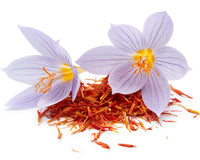The Pennisetum glaucum plant, usually referred to as pearl millet, is known by the ancient Hindi name bajra. It is also known as bulrush millet, dukn, cumbu, gero, sanio, kambu, or babala.
Summer crops like bajra, also known as pearl millet, are widely produced in Rajasthan, India, and a few African nations. Due to its gluten-free qualities as well as the inclusion of several vitamins, minerals, and other nutrients, this centuries-old millet has experienced tremendous growth in popularity in recent years.
The word "bajra" describes the edible pearl millet plant seeds. They can be found in a range of colors, including white, yellow, gray, brown, and bluish-purple. In most cases, the seeds are crushed into a flour or cooked like a cereal grain.
Bajra is a heart-healthy diet that is very beneficial in avoiding chronic illnesses, managing abrupt blood sugar rises, and lowering blood pressure.
This article will provide you with an overview of bajra and its benefits.
Benefits of Including Bajra in Your Diet

Due to its rarity as a crop, many people have never ever heard of millet or bajra. However, it is a staple in the majority of developing nations not just because it is simple to cultivate but also because it is nutrient-dense and healthy for humans. Although this seed crop comes in a variety of forms, pearl millet is the one that is planted the most frequently.
Bajra, like certain other grains, has been connected to important health advantages just by virtue of being a whole grain diet.
Consuming whole grains on a regular basis, such as bajra, may help fend against chronic diseases including diabetes, heart disease, and some malignancies. Here are various reasons for including bajra in your diet.
May Aid Weight Loss
Including whole grain meals with a low-calorie density in your diet, like bajra, may be helpful if you're attempting to lose weight.
A food's calorie density is determined by comparing its calorie content to its weight or volume.
Low calorie density foods let you feel satisfied with less calories. Foods having a calorie density of more than 2.3 are often regarded as rich in calories.
The calorie density of bajra is 1.2. Foods like bajra that have a low-calorie density may thus help with weight loss.
May Be a Good Choice for Diabetics
In general, most varieties of millet are regarded as a healthy grain option for diabetics.
The treatment of type 2 diabetes and other chronic illnesses has also been linked to foods high in fiber, particularly cereal fibers like bajra.
Additionally, compared to other refined grain products like white rice and white bread, millet has a lower glycemic index (GI). Furthermore, several recent studies in both people and animals suggest that millet proteins may help to lower blood sugar levels.
The glycemic index is a way to gauge how much a certain food will effect your blood sugar levels. People with diabetes should often choose foods with a lower glycemic index.
Heart Healthy
The heart is a crucial organ, and a balanced diet promotes optimal heart health. Bajra is a potent source of magnesium and potassium, both of which are essential for widening blood vessels and improving blood circulation.
As a result of bajra's abundance in plant lignans and omega-3 fatty acids, regular consumption helps lower harmful LDL cholesterol, avoiding artery blockages.
Eases Digestion
Healthy digestion and prevention of constipation are made possible by bajra, which also promotes general health. It is the perfect cereal for those with celiac disease because it is gluten-free. Consume bajra frequently if you suffer from constipation since the insoluble fiber helps to bulk up the stool and control bowel movements.
Natural Detoxifier
The wonderful compounds and antioxidants found in pearl millet, such as phenols, tannins, and phytic acid, can guard against heart attacks, strokes, and various cancers. In addition to boosting attractive skin, the catechins and quercetin in bajra cleanse the liver, kidney, and body from the inside out.
Combats Acidity
Because bajra belongs to the group of alkaline foods, it is a great option for preventing acidity. Gas buildup can cause a number of further issues, such as severe chest pain, burning in the stomach, and oesophagus.
By adhering to rigorous dietary guidelines like eating bland foods at regular intervals, acidity may be managed. Vegetables and bajra combine to significantly reduce acidity.
Strengthens Bones
Consider adding bajra to your diet if you are over 30 and already having joint discomfort. Together with calcium, this phosphorus-rich millet strengthens bones, decreases joint discomfort, and lowers the chance of developing chronic diseases like osteoporosis.
Improves Eyesight
Night blindness is a chronic illness that, in rare instances, may run in families. Children and adults who have poor vision might have major consequences, however bajra, which is rich in zinc and vitamin A, avoids night blindness, improves vision, and lessens other vision-related issues like macular degeneration or presbyopia.
Improves Skin and Hair Health
Pearl millet is a potent source of several nutrients that may greatly aid in glowing skin and good hair development.
Bajra has Cancer Protecting Properties
Studies have shown that eating foods high in fiber can lower your risk of developing breast cancer. In fact, women can drastically lower their risk of developing breast cancer by only taking 30 grams of bajra every day.
This is undoubtedly a significant advantage of this grain, considering breast cancer is one of the most prevalent kinds of cancer.
Bajra is Rich in Vitamin B
Vitamin B components are abundant in bajra. This indicates that it aids in the breakdown of both fat and carbohydrates in your body. Additionally, it has high levels of niacin, which helps the body produce more HDL, the good cholesterol. This may lessen the risk of bleeding.
Does Bajra Have Any Risks?
Most people are thought to be safe when taking modest amounts of bajra. As long as they are certain there was no cross-contamination with other gluten-containing grains, even those with celiac disease are able to consume it because it is a gluten-free grain.
You might have heard that bajra and other millets contain antinutrients, which is a cause for concern. Antinutrients are substances that can prevent or limit the absorption of other healthy nutrients from specific diets.
According to certain studies, bajra includes phytates, oxalates, and perhaps other antinutrients that may prevent the absorption of micronutrients like iron, zinc, phosphorus, and others that are ingested in the same meal, such as those included in that food.
Once more, several research indicate that processing millet in different ways can affect its antinutrient levels as well as the absorbability of some of its micronutrients and antioxidants.
However, it's crucial to remember that eating nutrient-dense foods—even those that include some antinutrients—often has advantages that outweigh the drawbacks of not eating them at all.
Additionally, millet's antinutrient content may be decreased by soaking, fermenting, or sprouting it.
The majority of people, even those adhering to a gluten-free diet, may safely consume bajra despite the fact that it contains several antinutrients that prevent the absorption of other vitamins and minerals.
Frequently Asked Questions (FAQs)
What Is Bajra Called in English?
Bajra is the traditional Hindi word for the Pennisetum glaucum crop, often known as pearl millet.
What Nutrition Do We Get From Bajra?
Antioxidants found in bajra include phytic acid, tannins, and phenols. In addition, it has a lot of other nutrients like magnesium and potassium and includes catechins like quercetin.
What Are the Benefits of Eating Bajra?
Bajra is a fantastic grain to have on hand and offers a number of health advantages. It is high in fiber and promotes digestion. Additionally, it decreases your bad cholesterol while raising your good cholesterol, which is excellent for your cardiovascular health.
Takeaway
Although it is eaten all around the world, the pearl millet variety known as bajra is principally farmed in Africa and India.
The gluten-free grain has few calories but is rich in beneficial elements that may aid in weight loss, better blood sugar control, and other health advantages.
Try replacing quinoa or rice in your favorite grain-based meals with bajra if you have access to it as a way to start experimenting with this nutrient-rich grain.
Read also;



